
Every year like clockwork, we see a new iteration of Apple’s overwhelmingly popular smartphone. This year, it’s the Apple iPhone 13 series, and it sees the company making subtle refinements to last year’s entries.
With that in mind, there are only minor differences between the 2021 iPhones and the 2020 models. However, there are still four iPhones on the docket, which can be confusing for the average buyer. In this buyer’s guide, we’ll break down all the info you need on what to expect with an Apple iPhone 13!
Related: Apple iPhone buying guide
Apple iPhone 13 series at a glance

Apple launched the new iPhone 13 series on September 14, 2021. Pre-orders start on September 17, with general sales starting on September 24, 2021.
Aside from some subtle differences, you won’t notice too many changes with this year’s iPhones. As with last year, there are four models, and each model is about the same size as last year’s equivalent. The number of cameras on the back of each device remains unchanged, although they have been revamped a bit on the lower-end models. The front of the devices is what changed the most, with the infamous notch getting slimmed down for the first time ever.
On the lowest end, we have the iPhone 13 Mini. It has a palm-friendly 5.4-inch display and almost all the same specs as the vanilla iPhone 13. It starts at $699, which makes it the cheapest mainline iPhone you can get.
The vanilla iPhone 13 is the “standard” model. It has the same size display as last year at 6.1-inches. It also has the same rear camera setup, with a primary shooter paired with an ultra-wide lens. The entry model will cost you $799.
Stepping up above the standard variant, we have the Apple iPhone 13 Pro. It’s the same size as the regular iPhone 13 but features a triple-lens camera on the back, among other upgrades. The third lens is a telephoto, which helps with zooming in on far-away subjects. It’ll set you back at least $999.
Finally, the highest-end new smartphone from Apple is the iPhone 13 Pro Max. It’s the biggest of the new phones with a 6.7-inch display. It has all the specs of the regular iPhone 13 Pro but comes with a bigger battery and some slightly better features. Being that it’s the best of the best from Apple right now, it’s also the most expensive, with a starting price of $1,099.
Is the Apple iPhone 13 worth buying?
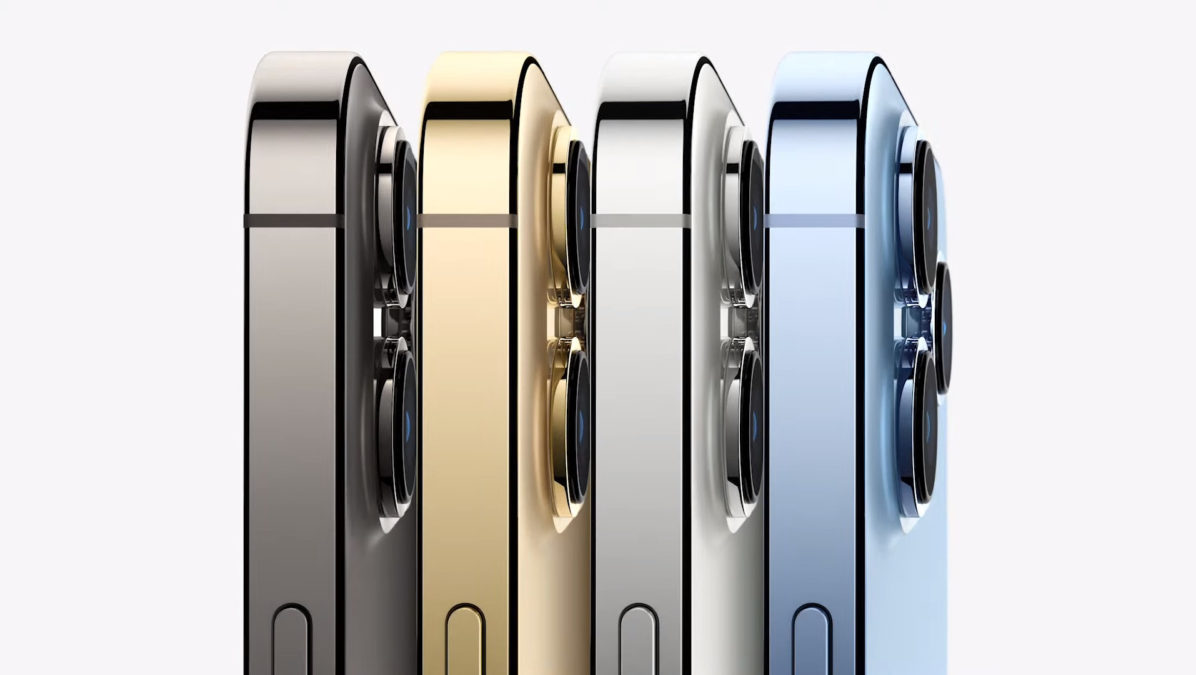
In 2020, Apple revamped a lot of the design aspects of its iPhones. It brought back the “boxy” design of the iPhone 4, changed the rear camera module design, and made other refinements. It also introduced the iPhone 12 Mini.
This year, Apple left things mostly the same. Sure, the fronts of the phones have a slightly smaller notch, the internals are better, and there are plenty of new features. Overall, though, if you already own an iPhone 12, there probably isn’t enough here to warrant a one-year upgrade.
See also: Our original Apple iPhone 12 Pro review
That being said, if you don’t already own an iPhone or have one that is several years old, the Apple iPhone 13 lineup is now the best the company has on offer. They have the fastest processor, the best cameras, the newest features, and — perhaps best of all — larger batteries, and faster charging.
Of course, there are plenty of Android phones out there that will match or even exceed most elements of the latest iPhones. Scroll down to our alternatives section for more on that.
Apple iPhone 13 specs
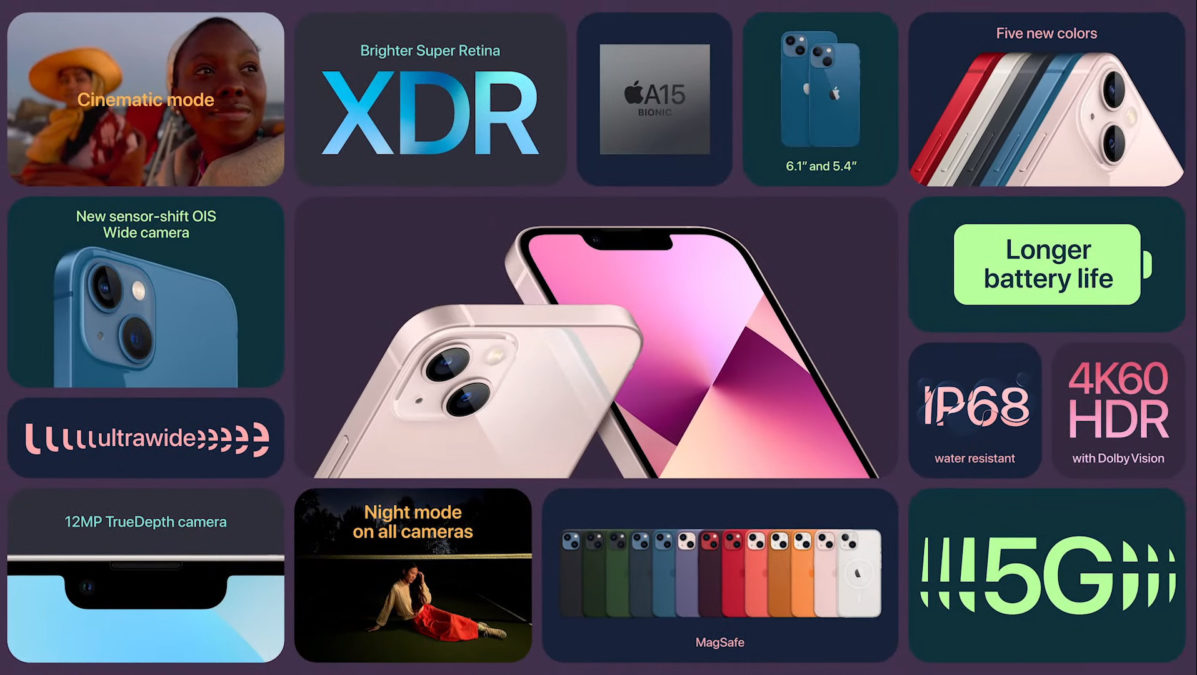
Aside from physical dimensions, the Apple iPhone 13 and iPhone 13 Mini are basically the same phones. Likewise, the iPhone 13 Pro and iPhone 13 Pro Max are very similar outside of how much bigger the Max is. Below you’ll find specs tables comparing each pair of devices.
| iPhone 13 Mini | iPhone 13 | |
|---|---|---|
| Display | 5.4-inch Super Retina XDR OLED 2,340 x 1,080 resolution HDR, True Tone Wide color (P3) 2,000,000:1 contrast ratio 800 nits max brightness (typical); 1200 nits max brightness (HDR) Ceramic Shield front |
6.1-inch Super Retina XDR OLED 2,532 x 1,170 resolution HDR, True Tone Wide color (P3) 2,000,000:1 contrast ratio 800 nits max brightness (typical); 1200 nits max brightness (HDR) Ceramic Shield front |
| Processor | Apple A15 Bionic | Apple A15 Bionic |
| Storage | 128 / 256 / 512GB | 128 / 256 / 512GB |
| Battery | Qi wireless charging up to 7.5W Up to 50% charge in around 30 minutes with 20W adapter or higher (sold separately) MagSafe: |
Qi wireless charging up to 7.5W Up to 50% charge in around 30 minutes with 20W adapter or higher (sold separately) MagSafe: |
| Cameras | Rear: -Wide-angle 12MP, ƒ/1.6, OIS, 7-element lens -Ultra-wide 12MP, ƒ/2.4, 120° field of view, 5-element lens, lens correction 2x optical zoom out, digital zoom up to 5x, Night Mode, Deep Fusion, Smart HDR 3 Video: Front: Night Mode, Deep Fusion, Smart HDR 3 |
Rear: -Wide-angle 12MP, ƒ/1.6, OIS, 7-element lens -Ultra-wide 12MP, ƒ/2.4, 120° field of view, 5-element lens, lens correction 2x optical zoom out, digital zoom up to 5x, Night Mode, Deep Fusion, Smart HDR 3 Video: Front: Night Mode, Deep Fusion, Smart HDR 3 |
| Connectivity | 5G (sub‑6GHz and mmWave) Gigabit LTE with 4×4 MIMO and LAA Wi‑Fi 6 (802.11ax) with 2×2 MIMO Bluetooth 5 Ultra Wideband chip for spatial awareness NFC Express Cards with power reserve GPS, GLONASS, Galileo, QZSS, and BeiDou Digital compass Wi‑Fi Cellular iBeacon microlocation |
5G (sub‑6GHz and mmWave) Gigabit LTE with 4×4 MIMO and LAA Wi‑Fi 6 (802.11ax) with 2×2 MIMO Bluetooth 5 Ultra Wideband chip for spatial awareness NFC Express Cards with power reserve GPS, GLONASS, Galileo, QZSS, and BeiDou Digital compass Wi‑Fi Cellular iBeacon microlocation |
| Sensors | Face ID Barometer Three‑axis gyro Accelerometer Proximity sensor Ambient light sensor |
Face ID Barometer Three‑axis gyro Accelerometer Proximity sensor Ambient light sensor |
| Software | iOS 15 | iOS 15 |
| Durability | IP68 | IP68 |
| Dimensions and weight | 131.5 x 64.2 x 7.65mm 141g |
146.7 x 71.5 x 7.65mm 174g |
| Colors | Pink, Blue, Midnight, Starlight, and Product Red | Pink, Blue, Midnight, Starlight, and Product Red |
| In the box | iPhone USB‑C to Lightning cable Documentation |
iPhone USB‑C to Lightning cable Documentation |
| iPhone 13 Pro | iPhone 13 Pro Max | |
|---|---|---|
| Display | 6.1-inch Super Retina XDR OLED 2,532 x 1,170 resolution ProMotion 120Hz HDR, True Tone Wide color (P3) 2,000,000:1 contrast ratio 1,000 nits max brightness (typical); 1200 nits max brightness (HDR) Ceramic Shield front |
6.7-inch Super Retina XDR OLED 2,778 x 1,284 resolution ProMotion 120Hz HDR, True Tone Wide color (P3) 2,000,000:1 contrast ratio 1,000 nits max brightness (typical); 1200 nits max brightness (HDR) Ceramic Shield front |
| Processor | Apple A15 Bionic | Apple A15 Bionic |
| Storage | 128 / 256 / 512GB and 1TB | 128 / 256 / 512GB and 1TB |
| Battery | Qi wireless charging up to 7.5W Up to 50% charge in around 30 minutes with 20W adapter or higher (sold separately) MagSafe: |
Qi wireless charging up to 7.5W Up to 50% charge in around 30 minutes with 20W adapter or higher (sold separately) MagSafe: |
| Cameras | Rear: -Wide-angle 12MP, ƒ/1.5, dual OIS, 7-element lens, 100% Focus Pixels, Night Mode -Ultra-wide 12MP, ƒ/1.8, 120° field of view, 5-element lens, lens correction, Night Mode -Telephoto 12MP, ƒ/2.8, dual OIS, 6-element lens 3x optical zoom in, 2x optical zoom out, 6x optical zoom range, digital zoom up to 15x, Deep Fusion, Smart HDR 3, Apple ProRAW Video: Front: Night Mode, Deep Fusion, Smart HDR 3 |
Rear: -Wide-angle 12MP, ƒ/1.5, dual OIS, 7-element lens, 100% Focus Pixels, Night Mode -Ultra-wide 12MP, ƒ/1.8, 120° field of view, 5-element lens, lens correction, Night Mode -Telephoto 12MP, ƒ/2.8, dual OIS, 6-element lens 3x optical zoom in, 2x optical zoom out, 6x optical zoom range, digital zoom up to 15x, Deep Fusion, Smart HDR 3, Apple ProRAW Video: Front: Night Mode, Deep Fusion, Smart HDR 3 |
| Connectivity | 5G (sub‑6GHz and mmWave) Gigabit LTE with 4×4 MIMO and LAA Wi‑Fi 6 (802.11ax) with 2×2 MIMO Bluetooth 5 Ultra Wideband chip for spatial awareness NFC Express Cards with power reserve GPS, GLONASS, Galileo, QZSS, and BeiDou Digital compass Wi‑Fi Cellular iBeacon microlocation |
5G (sub‑6GHz and mmWave) Gigabit LTE with 4×4 MIMO and LAA Wi‑Fi 6 (802.11ax) with 2×2 MIMO Bluetooth 5 Ultra Wideband chip for spatial awareness NFC Express Cards with power reserve GPS, GLONASS, Galileo, QZSS, and BeiDou Digital compass Wi‑Fi Cellular iBeacon microlocation |
| Sensors | Face ID LiDAR Scanner Barometer Three‑axis gyro Accelerometer Proximity sensor Ambient light sensor |
Face ID LiDAR Scanner Barometer Three‑axis gyro Accelerometer Proximity sensor Ambient light sensor |
| Software | iOS 15 | iOS 15 |
| Durability | IP68 | IP68 |
| Dimensions and weight | 146.7 x 71.5 x 7.65mm 204g |
160.8 x 78.1 x 7.65mm 240g |
| Colors | Graphite, Gold, Silver, and Sierra Blue | Graphite, Gold, Silver, and Sierra Blue |
| In the box | iPhone USB‑C to Lightning cable Documentation |
iPhone USB‑C to Lightning cable Documentation |
Which models get 120Hz refresh rates, aka ProMotion?
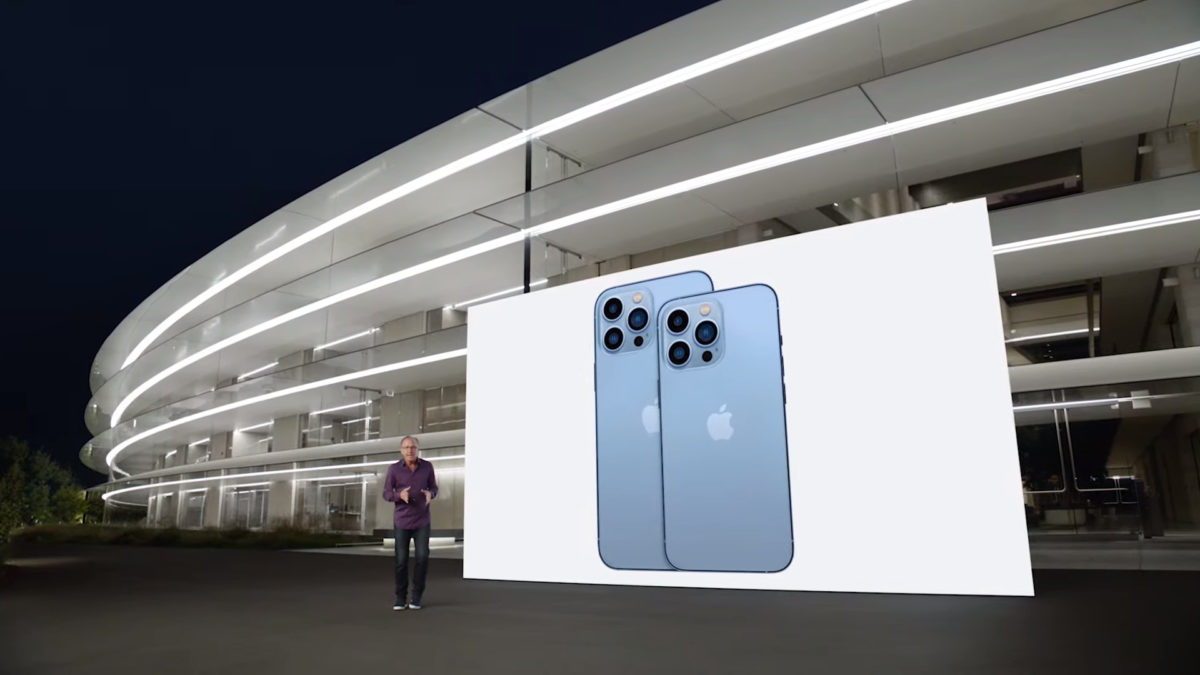
Flagship Android phones started getting high-refresh-rate displays years ago. Apple has launched products with high-refresh-rate displays already using the branding ProMotion — most notably the iPad Pro range. However, ProMotion has never made it to an iPhone before, which means all Apple smartphones have a 60Hz display.
That changes this year. For the first time, the Apple iPhone 13 series features phones with 120Hz display refresh rates, which is twice as fast as any other previous iPhone.
Related: What does 60Hz, 90Hz, or 120Hz mean?
What is the benefit of a higher display refresh rate? High refresh rates create smoother motion. When scrolling quickly through Instagram, for example, a 60Hz display could look jittery as the display tries to keep up with the fast transitions. A 120Hz display, though, will look much smoother. This can enhance your day-to-day smartphone usage, but it will also make playing high-end games much more enjoyable. Gamers who are very competitive will also appreciate the slight accuracy advantage that high refresh rate displays offer.
Unfortunately, Apple’s ProMotion only comes with the Pro iPhones this year. In other words, the iPhone 13 and iPhone 13 Mini will not have 120Hz displays, but the iPhone 13 Pro and iPhone 13 Pro Max will.
Is the Apple iPhone 13 camera good?
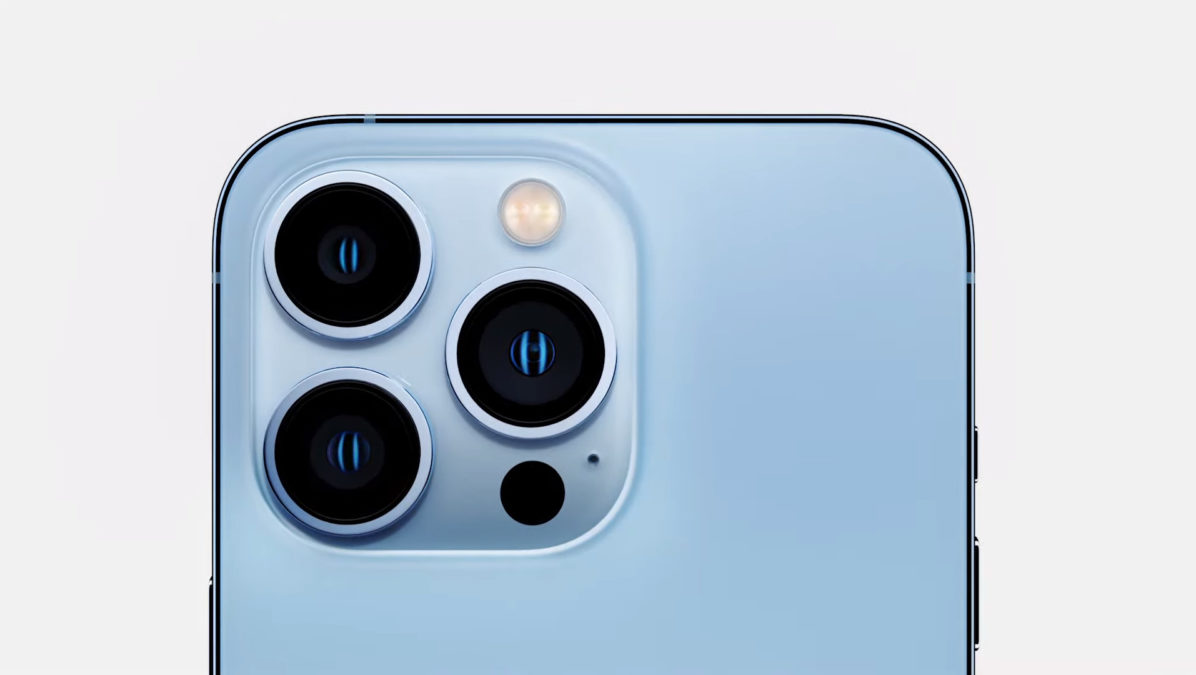
Last year, the iPhone 12 and iPhone 12 Mini came with a standard lens paired with a wide-angle shooter. The Pro models, meanwhile, had those same lenses but added in a third lens with telephoto capabilities. This year, we see the exact same setup on the phones within the Apple iPhone 13 family.
Now, that doesn’t mean Apple didn’t upgrade the camera hardware of the phones. The ultra-wide camera on the Pro and Pro Max has been upgraded from an ƒ/2.4 aperture to ƒ/1.8, giving it better shooting in low light, for example. However, there are no new lenses or other new hardware parts on any of the iPhones.
See also: The best camera phones you can get
Apple is also bringing new software tricks to the iPhone 13 series. There’s support for Cinematic Mode, which brings bokeh to video, and Night Mode on all the lenses, not just the main. ProRes video will also be supported on the Pro models, but not until “later this year.”
The iPhone 13 series should be some of the best devices from the company when it comes to photography and videography. However, the upgrades here aren’t so drastic that someone with an iPhone 12 (or even an iPhone 11) would need to upgrade.
How is the iPhone 13 battery life?
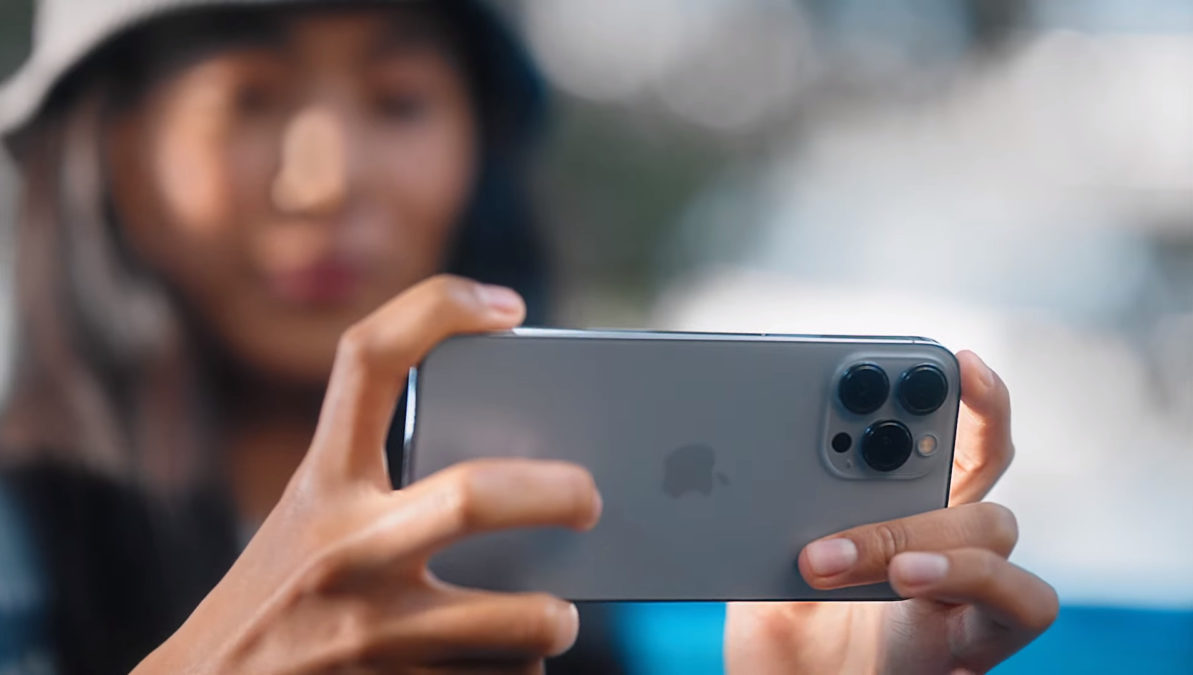
One of the best bits of news related to the new iPhones is that Apple increased the battery capacities for the whole line. When combined with the new A15 chipset (see next section), the battery life on these phones should be much better than what we saw with last year’s models.
As one would expect, the largest phone — the iPhone 13 Pro Max — has the biggest battery at 4,352mAh. The iPhone 13 and iPhone 13 Pro will both have 3,095mAh batteries. Finally, the tiny iPhone 13 Mini will have the smallest battery at 2,406mAh.
All these sizes are bigger than what we saw with the iPhone 12 series. Although we haven’t tested it out for ourselves yet, it’s a safe bet that you’ll see anywhere from 10 to 20% better battery life with these models.
Remember that there are no chargers in the boxes with iPhone 13 devices. You’ll need to buy a charger separately or use one you already own. The new iPhones can charge at a faster wired speed than last year: 25W instead of the maximum of 20W on the iPhone 12. All the new iPhones also support wireless charging.
How is the Apple iPhone 13 performance?

The Apple iPhone 13 series is powered by the latest and greatest Apple silicon known as the A15 Bionic. It is a 5nm+ build. Although we haven’t had a chance to benchmark this CPU yet, we are quite confident it will be the fastest mobile processor currently on the market — yes, even faster than the Qualcomm Snapdragon 888 Plus.
The Apple A15 Bionic is probably the most powerful mobile chipset you’ll find in a phone.
As such, performance will not be a concern with the iPhone 13 models. They should be able to handle pretty much any task you throw at them. The Pro models, though, have more RAM than the non-Pro models, so they will be slightly better at heavy tasks, especially if you have a lot of apps open in the background.
The A15 Bionic should be a bit more power-efficient than last year’s A14 Bionic. That means we could see better battery life from the iPhone 13 models, even when you factor out the larger batteries themselves.
Phone software and updates

All the new iPhones ship with iOS 15 on board. This is the latest version of the operating system. In general, iPhones see around five years of software updates. That means you should expect a yearly upgrade to the latest version of iOS from now until 2026 on any of the iPhone 13 models.
See also: Your complete guide to Apple Health, Apple Fitness, and Apple Fitness Plus
If you already own an older iPhone, you will also get iOS 15, assuming your phone is less than five years old. As such, if all you want is iOS 15, there’s no reason to upgrade to an Apple iPhone 13.
In iOS 15, you can expect updates to how you receive notifications, enhanced FaceTime calls, the ability to upload ID cards into Wallet, and much more. For more info on iOS 15, click here.
iPhone 13 vs iPhone 12: What’s new?

As mentioned a few times now, the Apple iPhone 13 series isn’t all that different from the iPhone 12 series. However, it does come with a few upgrades that we have detailed for you below. Keep in mind that the list doesn’t include every upgrade — just the most significant ones.
- Smaller notch, larger cameras: The notch on the front of all iPhone 13 models is slimmer than what we’ve seen on previous iPhones. Meanwhile, the rear camera module is a bit larger on the Pro models and slightly redesigned on the non-Pro models. The number and types of lenses, though, remain the same since the iPhone 12 series.
- ProMotion and AOD: The iPhone 13 Pro and iPhone 13 Pro Max have ProMotion displays, which is Apple’s branding for high refresh rate displays. They support up to 120Hz rates. The vanilla iPhone 13 devices, though, stick with 60Hz displays. Regardless of refresh rates, all iPhone 13 models now support always-on displays, something Android users have had for years.
- Batteries and charging: The batteries inside the iPhone 13 series are slightly larger than the ones we saw in the iPhone 12 series. This should result in longer battery life. The phones also charge a bit faster, with maximum wired speeds of 25W.
- Cameras: The ultra-wide camera on iPhone 13 Pro and iPhone 13 Pro Max has been upgraded from an ƒ/2.4 aperture to ƒ/1.8, giving it better shooting in low light. There are other minor updates to the other lenses, too. Do note that the main and ultra-wide lenses on the iPhone 13 and iPhone 13 Mini remain unchanged.
- Storage: The starting storage capacity for the iPhone 13 and iPhone 13 Mini is now 128GB, up from 64GB. It also goes as high as 512GB, which last year’s models did not offer. Meanwhile, the Pro models have a new 1TB option.
What are some good iPhone 13 alternatives?
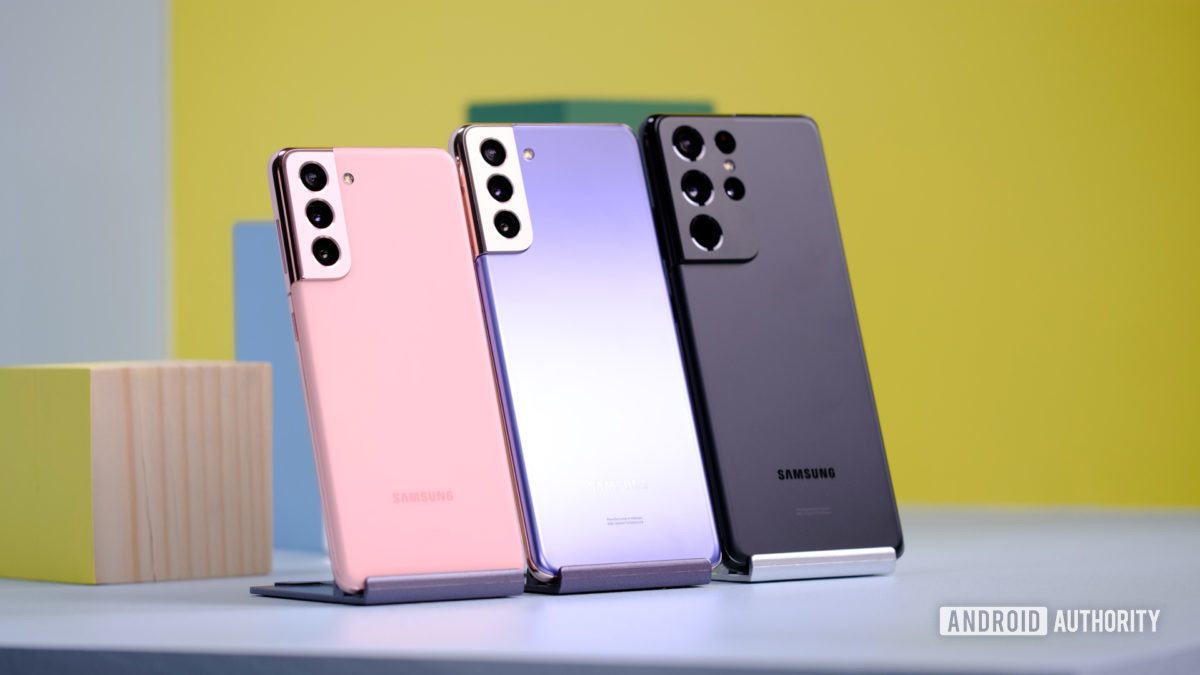
If you are interested in the iPhone 13 lineup but can’t stomach the price, your best bet is to check out older iPhones. However, if you like the idea of the iPhones but want to stick with (or migrate to) Android, there are plenty of choices that should make you happy.
- iPhone 12 lineup ($699 to $1,099): With the launch of the Apple iPhone 13 series, the 2020 lineup is now officially old hat. Thankfully, that means you can find the devices for less cash than you used to. Obviously, the iPhone 13 series will be better than the iPhone 12 series, but the two lines aren’t that different. If you don’t need the latest bells and whistles, the iPhone 12, iPhone 12 Mini, iPhone 12 Pro, and iPhone 12 Pro Max are absolutely worth a look.
- Samsung Galaxy S21 lineup ($799 to $1,199): In the world of Android, Samsung’s Galaxy S line is the closest analogy to Apple’s iPhones. The Galaxy S21 will be akin to a vanilla iPhone 13 in some ways while superseding it with a few features, such as having a telephoto lens. The Galaxy S21 Ultra will be comparable to the iPhone 13 Pro Max, with more cameras, a bigger battery, and more.
- OnePlus 9 Pro ($969): If you want one of the best phones in the Android world but aren’t interested in Samsung, the OnePlus 9 Pro is a terrific alternative. It has a huge display with a 120Hz refresh rate, a great camera system, ultra-fast wireless charging, and much more. It’s comparable to an iPhone 13 Pro Max but a little cheaper.
- Asus Zenfone 8 ($629): The iPhone 13 Mini is the smallest of the new phones, and Android manufacturers don’t really make phones that small anymore. That is, except for Asus, which launched the Asus Zenfone 8 this year. It’s not as small as the iPhone 13 Mini, but it is your best bet for a compact Android-based device this year.
Also, keep in mind that the Pixel 6 series is expected to launch soon. Based on the latest leaks and rumors, we think it will be a great alternative to the iPhone 13 series. Google’s phones are known for their bloat-free software experience and great cameras, and we don’t expect that to change with the company’s upcoming handsets. To learn more about them, check out our dedicated Pixel 6 rumor roundup post.
Where to buy the Apple iPhone 13 series
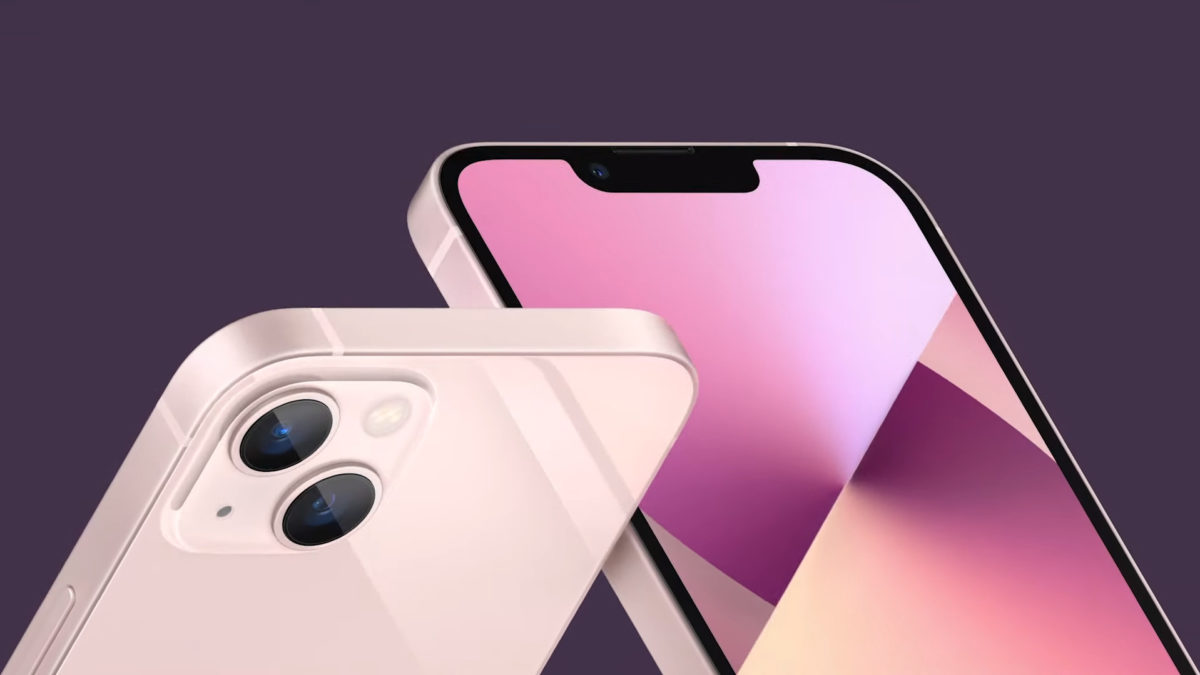
- iPhone 13 Mini (128GB): $699
- Apple iPhone 13 (128GB): $799
- Apple iPhone 13 Pro (128GB): $999
- iPhone 13 Pro Max (128GB): $1,099
Apple launched the new iPhone 13 series on September 14, 2021. Pre-orders start on September 17, with general sales starting on September 24, 2021.
The starting prices for the iPhone 13 series remains the same as last year. However, do note that the iPhone 13 and iPhone 13 Mini start with 128GB of internal storage, which is twice as much as the iPhone 12 and 12 Mini. That means you’re spending the same amount of cash as last year, but getting more capacity.
Also, note that the iPhone 13 Pro and 13 Pro Max now have 1TB models. Those models start at $1,499 and $1,599 respectively, so start saving your pennies.
The small boi gets a second edition.
The vanilla model with all the basics.
An extra camera lens and other perks up the ante for this model.
The largest of the 2021 models with all the features in tow.
FAQs
Q: Do the Apple iPhone 13 devices have fingerprint sensors?
A: No. This was rumored for a few months but it didn’t come to be. The lone biometric security system of these phones is Face ID.
Q: Are the iPhone 13 phones water-resistant?
A: Yes, all four models are IP68-rated against water and dust.
Q: Will cases for the iPhone 12 series fit the iPhone 13 series?
A: No. Although the phones are about the same size as last year, the rear camera modules have been slightly redesigned. Therefore, cases from last year’s models won’t fit correctly.